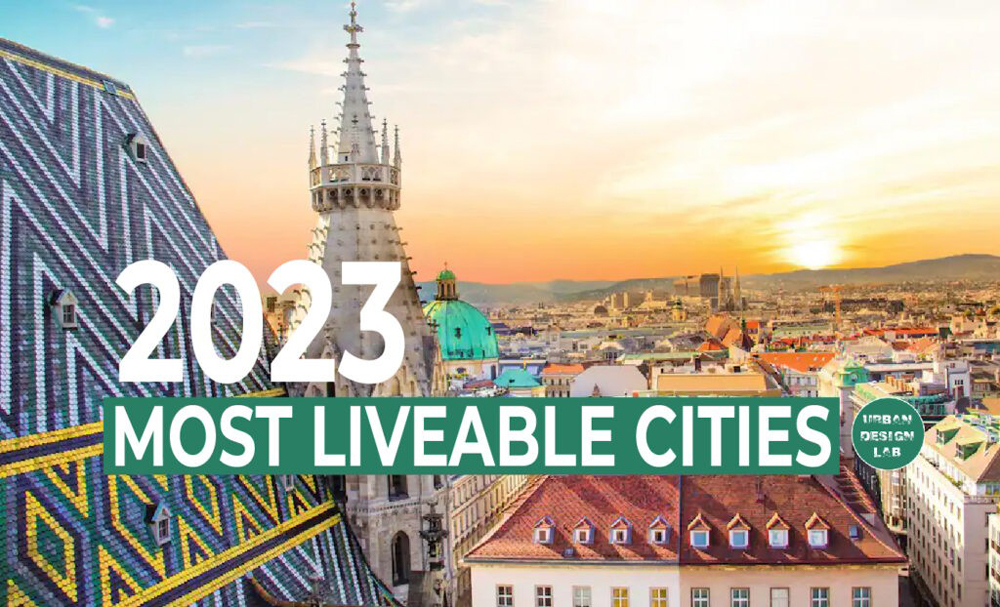Introduction
The term “liveability” has emerged as a crucial metric in evaluating the quality of life in cities across the globe, drawing considerable interest from urban planners, policymakers, and residents alike. This concept is central to numerous global surveys designed to highlight cities that excel in offering their inhabitants a superior quality of life. Among these is the well-regarded Global Livability Ranking published annually by the Economist Intelligence Unit (EIU). This ranking meticulously evaluates cities worldwide, taking into account a wide range of parameters such as infrastructure, healthcare, education, culture, environment, and stability. The 2023 edition of this ranking is particularly noteworthy, offering a comprehensive and revealing glimpse into the living standards prevalent in urban areas around the world. It sheds light on how different cities fare in terms of providing a conducive and enjoyable living environment for their citizens, thereby serving as a valuable tool for understanding and improving urban life.
Methodology
In its assessment process, the Economist Intelligence Unit (EIU) employs a comprehensive methodology, focusing on five principal domains that are crucial for determining the livability of a city. These domains include stability, healthcare, culture and environment, education, and infrastructure. Each of these categories is meticulously analyzed to provide a holistic view of what each city offers to its residents.
For the 2023 edition of its Global Livability Ranking, the EIU significantly expanded its survey’s reach, evaluating a total of 172 cities around the world. This marked a considerable increase from the 140 cities that were assessed in its previous iteration. This expansion allows for a more inclusive and diverse representation of global cities, offering a broader perspective on urban living conditions across different regions. The inclusion of more cities also introduces new data and insights, enriching the understanding of what makes a city livable and how various urban centers are evolving in response to changing global trends and challenges. This comprehensive approach ensures that the EIU’s ranking is a robust and reliable resource for those looking to understand the dynamics of urban livability.
Top Rankings
Vienna, Austria’s splendid capital, continues to hold the title of the most liveable city in 2023, a position it also claimed in 2018, 2019, and 2022. This remarkable consistency highlights Vienna’s excellence in urban qualities. Following closely are Copenhagen, Denmark, and Melbourne, Australia, with Sydney, Australia, and Vancouver, Canada, rounding out the top five. Notably, Canadian and Australian cities, along with those from Western Europe and New Zealand, frequently appear in the top rankings, reflecting their well-rounded urban development.

Insights from the 2023 Ranking
The top 10 cities in the 2023 Global Livability Ranking showcase a diverse geographic representation, highlighting the global nature of urban development and quality of life. Notable cities such as Zurich, Calgary, Geneva, Toronto, and Osaka have secured their places in this prestigious list. These cities, hailing from different continents, exemplify the varying attributes that contribute to high living standards, ranging from economic prosperity and cultural richness to efficient infrastructure and public services.
This year’s ranking also signifies a remarkable recovery in global liveability since the COVID-19 pandemic. Notably, there have been marked improvements in education and healthcare scores, with cities in Asia, Africa, and the Middle East showing significant progress in these areas. This improvement reflects the resilience and adaptability of these cities in the face of global health challenges.
On the other hand, Western European cities have experienced a slight decline in their rankings. This downturn is attributed to factors such as strikes and civil unrest, which have impacted the overall sense of stability and well-being in these regions. Such factors underscore the dynamic and ever-changing nature of urban environments and the myriad challenges they face.
The survey further highlights an intriguing observation: life in cities is currently at its best in the last 15 years, according to the metrics used in the ranking. However, it’s important to note that stability scores have seen a decrease, influenced by ongoing global conflicts and political disruptions. This dichotomy suggests that while urban centers continue to improve in many aspects of livability, they are simultaneously navigating complex challenges that affect their overall stability and security. This juxtaposition of progress and challenge paints a nuanced picture of urban life in the contemporary world.


Indian Cities in the Mix
In the Economist Intelligence Unit’s list, New Delhi and Mumbai from India are both ranked at the 141st position. Chennai follows closely, placed at the 144th spot. Additionally, Ahmedabad and Bengaluru are also featured, with Ahmedabad taking the 147th rank and Bengaluru positioned at 148th.
The presence of these cities in the EIU’s ranking is indicative of India’s urban growth and the increasing attention these cities are paying to factors that enhance the quality of urban life. It reflects a broader trend of urban development in emerging economies, where cities are increasingly focusing on improving livability alongside economic growth.
Conclusion
The 2023 Global Livability Index paints a nuanced picture of urban life across the globe. While cities like Vienna, Copenhagen, and Melbourne showcase the zenith of urban living, regions like Damascus remind us of the challenges many cities face. The index serves not only as a benchmark for cities to aspire to but also as a call to address the disparities in urban living standards worldwide.

